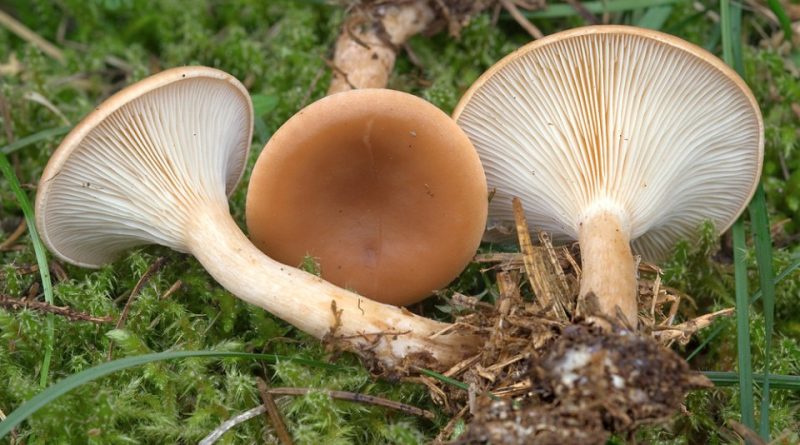Paralepista flaccida
Paralepista flaccida
The tawny funnel cap (Paralepista flaccida (Sowerby) Vizzini, 2012) is a basidiomycetes fungus belonging to the Tricholomataceae family.
Systematic –
From the systematic point of view it belongs to the Domain Eukaryota, Kingdom Fungi, Basidiomycota Division, Class Basidiomycetes, Subclass Hymenomycetidae, Order Agaricales, Family Tricholomataceae and then to the Paralepista and P. flaccida species.They are obsolete terms: Lepista flaccida (Sowerby: Fr.) Pat. 1887 Lepista inversa (Scop.) Pat. 1887.
Etymology –
The term Paralepista is constituted by the lemma para, from the Greek παρά “near, beside”, or “beyond”, and lepist, from the Greek λεπιστός lepistós peeled, meaning bare, bald: fungus devoid of particular ornaments. The specific flabby epithet, deriving from flabby, sloping, flaccid, sagging.
Geographic Distribution and Habitat –
Paralepista flaccida is a gregarious fungus, very common that grows both in the deciduous and coniferous woods, on humid and humus-rich soils. It is also recognized because it forms on the ground the so-called “witch’s circles” or long lines similar to those of the Lepista nebularis. Fruits in the autumn period.
Recognition –
It is recognized to have the hat of elastic consistency, funnel-shaped, with the edge often convoluted, depressed in the center, with a smooth red-brick color that in old age lightens assuming an orange or yellow-dirty color. The slats are decurrent, dense, whitish, yellow-dirty because of the dirty. The stem is short, of more or less irregular shape, colorless to the hat. The meat is white-dirty tending to hazelnut, consistent, then elastic and finally soft, with a fruity and acidulous odor, particular, rather complex that sometimes reminds a bit of cheese and acidulous taste. 4-5 x 3 μm, cream-white in bulk, ellipsoidal, rough.
Cultivation –
Tawny funnel cap on is a cultivated mushroom.
Uses and Traditions –
The Paralepista flaccida has been included in the genus Paralepista, with the aid of molecular analysis. This species has been transferred several times from one genus to another (Omphalia, Clitocybe, Lepista) and in these relocations, however, the Paralepista flaccida has always been distinguished also by the Lepista inversa, the first associated with a conifer with a shiny and smooth pileo, the second associated with broad-leaved trees. In 2012 the mycologist Alfredo Vizzini, after molecular investigations, underlined how this species, together with others, belongs to a clade that has been separated from Lepista. Already proposed in the past by Jörg H. Raithelhuber as a subgenre, Alfredo Vizzini has taken the name of this subgenus elevating it to the Paralepista genus and considering Paralpista flaccida and reverse Lepista as a single entity. The Paralapista flaccida is however a quite appreciated edible mushroom. Edibility remains discreet in the older and soft specimens, good in young specimens and of elastic consistency. In general, the carpophores that grow under conifers are better.
Preparation Mode –
The Paralapista flaccida is a fungus that finds more or less extensive appreciation also depending on the region. In any case this mushroom can be prepared more properly in mushroom mixtures.
Guido Bissanti
Sources
– Wikipedia, the free encyclopedia.- Cetto B., 2008. The mushrooms from life, Saturnia, Trento.- Pignatti S., 1982. Flora of Italy, Edagricole, Bologna.- Conti F., Abbate G., Alessandrini A., Blasi C. (edited by), 2005. An annotated checklist of the Italian vascular flora, Palombi Editore.
Warning: Pharmaceutical applications and alimurgical uses are indicated for informational purposes only and do not in any way represent a medical prescription; there is therefore no liability for their use for curative, aesthetic or food purposes.


